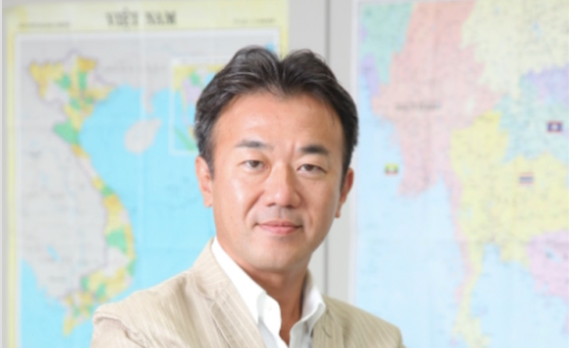二つの海外展開戦略
日本食は2016年、現在99,000店舗世界中にあるらしい。
年を追う毎に増えていく。
「和食」というものが、世界文化遺産に登録されて、その数は一気に増えているようだ。
世界に日本食が広がることは嬉しいし、ビジネスチャンスがどんどん世界に広がっているとも言える。
すし、天ぷら、ラーメン、、、いろんな日本食が世界に広がっていく。
実際に今日、2017年1月2日 フランスのパリにいるのだが日本食の店舗数が本当に増えている。
ビザの解禁と円安誘導とによって、海外からの旅行客は増える一方だ。
今までのように東京、京都、大阪のような大都市だけでなく、昨今は地方都市へ、その広がりを見せている。
様々なプラスの要因を持って日本の飲食企業が世界へ出ていくチャンスが広がってきた。
大企業だけでなく、中小企業(地方都市で5店舗くらいしか展開していないような企業)でも世界に出ていっている。
大きな戦略的にはふたつ。
自社の業態がどのような業態かを分析する必要があるが、
・仏のLVMH(モエヘネシールイヴィトン)のようなブランドホルダー展開戦略
・米のマクドナルドに代表されるフランチャイズによる展開戦略
前者の展開はミシュランのような星の評価を頂いているようなブランド店舗の展開戦略だ。
各国の企業と合弁会社を立ち上げ、人を派遣し、ブランドを守りながら展開する戦略
ただ展開できる店舗数は少なく、スピードも遅い。
後者はアメリカが企業が得意とするチェーン展開戦略、オペレーションを仕組化し、誰でもできるオペレーションにして、一気に店舗数を出していく戦略。
展開戦略として、どちらかが正解でどちらかが不正解ではない。
アメリカ企業が後者の戦略をとるのは自国の歴史、文化に根ざすところが大きい。
アメリカ合衆国は建国からまだ200年ちょっと。自国の文化もヨーロッパ諸国や、中国、日本に比べると少なく、浅い。
「食は文化」と言われるが、当然歴史の浅い国に深い食文化が根ざしている事例はあまりないだろう。
アメリカの飲食企業は 食から事業を見るのではなく、事業(フランチャイズ等のビジネス スキーム)から食を見る。
かたや日本はどうか?
なまじっか国の歴史が長く、食の文化が深く、バリエーションが豊富であり、各国の食のアレンジ能力にも長ける。
だから
日本の飲食企業では 食から事業(ビジネスやフランチャイズ)を見る。
どちらが良いか、という議論ではないが、この違いは非常に大きい。
仕組化の完成度も展開のスピードも根本から変わってしまう。
世界中にアメリカの食のチェーンが一気に展開しているのに、日本のチェーンが展開しきらないのは、ここによることが大きいのではないか?
食に関する仕組化が下手。
食にこだわりを持ちすぎるがゆえに妥協しても良い部分を妥協しない。
それが足かせになり、世界でスピーディーな店舗展開ができない。
ミシュランホルダーのような店舗はLVMHの戦略で展開すれば良い。
店舗にこだわり続けて、少数展開する戦略だ。
これは「食」の分野だけに限らないかもしれない。
文化のある国が、その文化が新しい発想の足かせになる事例。。。
「日本からアメリカまでいくのに1日で行け!」と言われて船で行く人はいない。
何をゴールにするのか? 何をゴールに事業展開するのか?
それが大事ということだ。
AssentiaHoldings ,Inc.
Akira Tsuchiya
English ↓
Two Overseas Expansion Strategies
Japanese Food is 2019 They currently have 156,000 restaurants worldwide. The number increases with each passing year.
The number seems to be increasing all the time since "Japanese food" was registered as a World Heritage Site. I am happy to see Japanese food spreading throughout the world, and I can say that business opportunities are expanding rapidly throughout the world.
Sushi, tempura, ramen, and various other Japanese foods are spreading throughout the world. In fact, I was in Paris, France on January 2, 2017, and the number of Japanese restaurants is really increasing.
With the lifting of the visa ban and the weakening of the yen, the number of tourists from abroad is only increasing. The number of Japanese restaurants in Paris, France is really increasing due to the lifting of the visa ban and the depreciation of the yen.
With various positive factors, Japanese food and beverage companies now have more opportunities to go out into the world.
Not only large corporations, but also small and medium-sized enterprises (companies with only five or so outlets in a local city) are going global.
There are two major strategies.
(1) The company needs to analyze what type of business it is in,
The first is the strategy of developing brand holders such as LVMH (Moet Hennessy Louis Vuitton) in France, and the second is the strategy of developing franchises such as McDonald's in the U.S. The former is the strategy of developing franchises such as Michelin.
The former is a strategy to develop brand stores that have received Michelin star ratings. The former strategy is to establish joint ventures with companies in various countries, dispatch staff, and develop while protecting the brand, but the number of stores that can be developed is small and the speed is slow.
The latter is the strategy of developing a chain of stores, which is the specialty of U.S. companies, and is a strategy of systematizing operations so that anyone can do them, and launching the number of stores at once.
As a development strategy, one is correct and the other is not.
The reason why American companies adopt the latter strategy is largely rooted in the history and culture of their own country. The United States was founded only a little over 200 years ago. The United States has been in existence for only a little more than 200 years, and its own culture is still relatively shallow compared to that of European countries, China, and Japan. It is said that "food is culture," but of course, there are not many examples of countries with a deep food culture rooted in a country with a short history.
American restaurant companies do not look at their business from the perspective of food, but rather from the perspective of their business (franchise and other business schemes).
What about Japan, on the other hand?
Japan, on the other hand, is a country with a long history, a deep food culture, a rich variety of foods, and a great ability to arrange foods from different countries.
That is why Japanese food and beverage companies look at their business (business or franchise) from the perspective of food.
This is not an argument about which is better, but the difference is huge. Both the degree of perfection of structuring and the speed of development are fundamentally different.
This is the main reason why Japanese chains are not able to fully develop while American food chains are expanding all over the world at once.
Poor structuring of food. They are too particular about food, and therefore do not compromise on areas where compromise is acceptable. This is what holds them back, and prevents them from expanding their stores speedily around the world.
Stores like Michelin holders should be developed using LVMH's strategy. The strategy is to continue to focus on stores and develop a small number of them.
This may not be limited to the "food" sector.
This is an example of a country with a culture whose culture becomes a stumbling block to new ideas.
No one goes by boat when told, "Go from Japan to the U.S. in one day!"
No one goes by boat when asked to "go from Japan to the U.S. in one day!
What is the goal? What is the goal of business development?
That is what is important.
Akira Tsuchiya, Assentia Holdings Inc.
アセンティア・ホールディングスのフランチャイズについての考え方
フランチャイズビジネスの意義と価値 https://www.assentia-hd.com/newproject/why/



